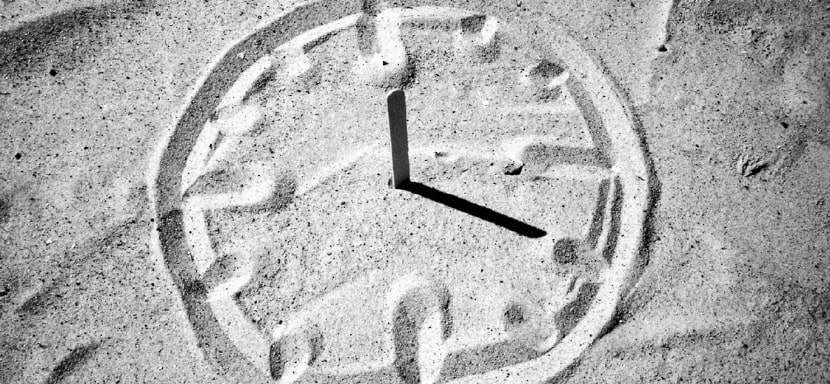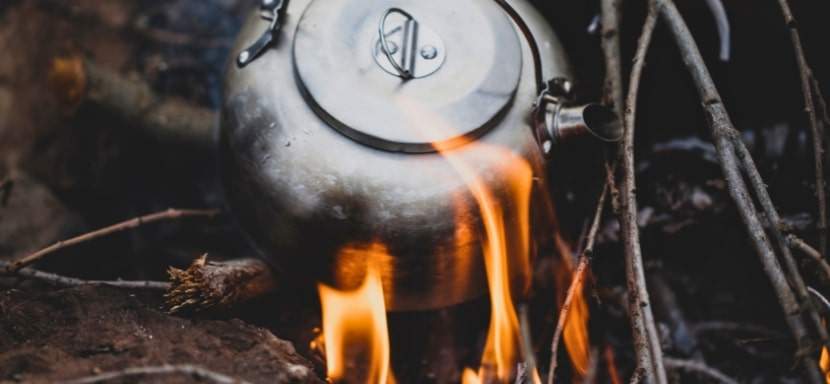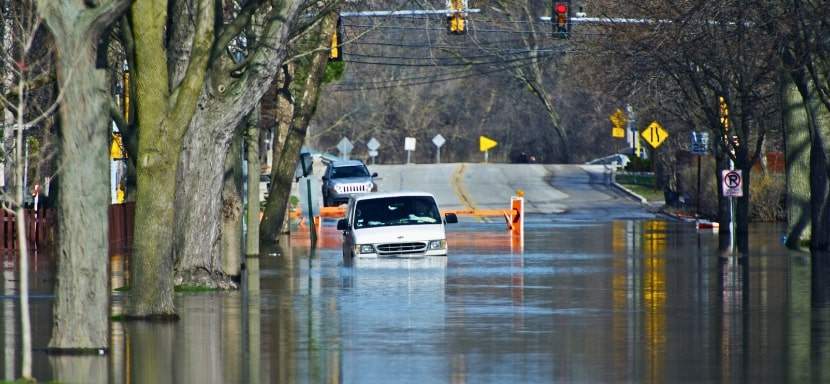How to Signal for Help During an Emergency

How to Signal for Rescue in Survival Situations
Signaling for help is a crucial skill that everyone should master. This guide covers everything from essential signaling tools like whistles and mirrors to advanced techniques using technology.
Knowing how to signal for help can be a lifesaver in times of emergency.
Whether lost in the wilderness, stranded at sea, or in a dangerous urban environment, understanding the proper techniques to attract attention can mean the difference between rescue and disaster.
Key Points
- Signal Visibility and Audibility: Use high-contrast colors for visual signals and loud, distinct sounds for auditory signals to ensure rescuers can see or hear you from a distance.
- Use Technology and Tools: Equip yourself with essential signaling tools, such as whistles, signal mirrors, personal locator beacons (PLBs), and mobile phones with emergency functions, for effective communication in various environments.
- Prepare and Practice: Assemble a signaling kit with necessary items, familiarize yourself with their usage, and regularly practice signaling techniques to stay calm and effective in emergencies.
Quick Tips for Signaling for Help During an Emergency
Knowing how to signal for help effectively can save your life in an emergency. Here are ten tips to ensure you’re prepared to attract attention and get rescued.
- Carry a Whistle: Always have a whistle with you; three short blasts are the universal distress signal.
- Use a Signal Mirror: Reflect sunlight to create a bright flash that can be seen from miles away.
- Create Ground Signals: Use rocks, branches, or brightly colored fabric to spell out SOS or other distress signals.
- Build a Fire: A smoky fire during the day and a bright fire at night can attract attention.
- Wave Brightly Colored Fabric: Use a flag or clothing to make yourself more visible.
- Use Personal Locator Beacons (PLBs): These devices send a distress signal via satellite to alert rescuers to your location.
- Utilize Your Mobile Phone: If you have service, use your phone to call emergency services or send a distress message.
- Flashlights and Strobes: Use a flashlight or strobe light to signal your location at night.
- Create Noise with Objects: Bang rocks or metal objects together to create a loud noise that can be heard from a distance.
- Stay Visible and Audible: Continuously signal until help arrives, ensuring you remain in a safe and open area for visibility.
What Does S.O.S. Mean?
S.O.S. stands for “Save Our Souls” or “Save Our Ship,” an internationally recognized distress signal used to indicate that someone is in urgent need of help. Originating from maritime use, this signal has become universally associated with emergencies.
The sequence is simple: three short, three long, and three short signals again ( … — … ). This can be communicated through various means, such as Morse code, light flashes, or sound signals, making it versatile and practical in different situations.
Despite its historical maritime roots, S.O.S. is now widely used in various emergency contexts, symbolizing a call for immediate assistance.

Visual Signaling Techniques
Visual signaling techniques are essential for attracting emergency attention by making yourself visible to rescuers. These methods leverage reflective surfaces, contrasting colors, and oversized shapes to ensure your signals can be easily seen from a distance, increasing your chances of being found.
Using Signal Mirrors
One of the most influential visual signaling tools is the signal mirror. This compact device can reflect sunlight to create a bright, noticeable flash.
To use a signal mirror:
- Hold the mirror in one hand and extend your other arm toward your target (e.g., aircraft or rescue team).
- Align the sighting hole or notch with the target.
- Tilt the mirror to reflect sunlight onto your hand and then move it to shine the light on your target.
Creating Ground Signals
Ground signals are instrumental in wilderness and open areas. You can create large, high-contrast shapes or letters using rocks, branches, or brightly colored fabric.
Common ground signals include:
- SOS: The internationally recognized distress signal, “SOS,” can be spelled using contrasting materials.
- V: Indicates that you need assistance.
- X: Signals that you are unable to proceed.
Using Flags and Fabrics
Brightly colored flags or pieces of fabric can be waved to attract attention. Without a flag, clothing or other materials can be used. The key is to choose colors that stand out against your surroundings.
Auditory Signaling Techniques
Auditory signaling techniques are crucial for attracting attention when visibility is low. These methods rely on loud, distinct sounds to alert rescuers to your location, ensuring you can be heard from a distance.
Whistles
A whistle is an essential tool for signaling for help due to its loud, piercing sound, which can be heard from a distance. The international distress signal using a whistle involves three short blasts repeated regularly.
Shouting and Yelling
While not as effective as mechanical aids, shouting can still attract attention if rescuers are nearby. It’s essential to conserve energy and avoid straining your voice unnecessarily.
Fire and Explosives
Sometimes, a loud noise from a firecracker or similar device can draw attention. However, these methods should be used cautiously to avoid causing unintended harm.
Did You Know?
In ancient times, Native Americans and other Indigenous cultures used smoke signals not only for long-distance communication but also to signal for help. Different patterns and numbers of puffs carried specific messages, making smoke signals an early form of emergency signaling that could be seen from miles away.
Technological Signaling Devices
Technological signaling devices offer advanced and reliable ways to communicate distress during emergencies. These tools leverage modern technology to ensure that your call for help is effectively transmitted and received, providing crucial support in various environments.
Mobile Phones and Radios
Mobile phones and radios are invaluable for signaling for help in urban environments or areas with network coverage. Ensure your device is charged and you can use emergency functions or frequencies.
Personal Locator Beacons (PLBs)
PLBs are compact, portable devices that send a distress signal to a satellite, relaying your location to emergency responders. These devices are particularly useful in remote areas where traditional signals are ineffective.
GPS Devices
Modern GPS devices often have emergency signaling capabilities. Familiarize yourself with your device’s functions and ensure it’s easily accessible in an emergency.
Improvised Signaling Methods
Improvised signaling methods utilize available resources to attract attention in emergencies. These techniques are essential when you don’t have access to specialized signaling tools, enabling you to effectively communicate your need for help using common items and natural elements found in your surroundings.
Using Fire and Smoke
Fire is a versatile signaling tool. A smoky fire during the day and a bright fire at night can be seen afar. Use green vegetation to create thick smoke and ensure the fire is in a precise, visible location.
Reflective Materials
Even without a signal mirror, any reflective surface, such as metal or a compact disc, can reflect sunlight and attract attention.
Creating Noise with Objects
Banging rocks or metal objects together can create a loud noise that may draw attention. Be mindful of the environment to avoid disturbing wildlife or causing unintended damage.

Emergency Signaling in Different Environments
Effective emergency signaling techniques vary depending on the environment. Each setting—whether it’s the wilderness, open sea, or an urban area—presents unique challenges and requires specific methods to ensure you’re noticed and rescued. Understanding the appropriate signaling techniques for each environment is crucial for effective communication and increasing your chances of survival.
Wilderness Survival
In the wilderness, it’s crucial to remain visible and audible to rescuers. To increase your chances of being found, create ground signals, use a whistle, and build fires.
Marine Emergencies
Visibility and audibility are limited at sea. Use flares, signal mirrors, and distress flags. Ensure your boat is equipped with essential signaling tools like a whistle, mirror, and VHF radio.
Urban Crises
In urban areas, signaling might involve using your mobile phone, shouting for help, or creating visible signals in windows or rooftops. Ensure you’re aware of local emergency numbers and procedures.
Preparation and Practice
Preparation and practice are vital to signal for help during an emergency effectively. You increase your readiness and confidence in critical situations by assembling a well-equipped signaling kit and regularly practicing using your tools.
Assembling a Signaling Kit
Prepare a signaling kit with essential tools like a whistle, mirror, brightly colored fabric, and fire-starting materials. Keep this kit accessible in your backpack, car, or boat.
Practicing Signaling Techniques
Regular practice ensures you can use your signaling tools effectively in an emergency. Familiarize yourself with the operation of devices like PLBs and GPS units.
Maintaining Calm and Focus in Emergencies
Maintaining calm and focus in emergencies is crucial for effective decision-making and signaling for help. Staying composed enables you to use your resources efficiently and increases your chances of a successful rescue.
Psychological Preparedness
Stay calm and focused in an emergency. Panic can impair your ability to think clearly and use your signaling tools effectively.
Prioritizing Your Safety
While signaling for help, prioritize your safety. Avoid dangerous areas and ensure you’re safe while waiting for rescue.
Legal and Ethical Considerations
Legal and ethical considerations are crucial when signaling for help to ensure that your actions are appropriate and do not cause harm or misuse resources. Understanding and adhering to these guidelines helps maintain the integrity of emergency response systems and respects the environment and local regulations.
Avoid False Alarms
False alarms can divert valuable resources from real emergencies. Signal for help only when you are in genuine need.
Environmental Impact
Consider the environmental impact of your signaling methods. Avoid causing unnecessary harm to wildlife or the environment.
Respect for Local Laws and Customs
Be aware of local laws and customs regarding emergency signals. Some areas may have specific regulations or protocols for signaling for help.
Signaling for Help FAQs
How can I signal for help in the wilderness?
Use visual signals like mirrors and ground markings, auditory signals like whistles, and create fires to attract attention.
What is the best way to signal for help at sea?
Use flares, signal mirrors, distress flags, and VHF radios. Ensure your boat is equipped with essential signaling tools.
Can I use my mobile phone to signal for help?
Yes, mobile phones are invaluable for signaling for help in areas with network coverage. Use emergency functions or call emergency services directly.
What should be included in a signaling kit?
A signaling kit should include a whistle, mirror, brightly colored fabric, fire-starting materials, and a PLB or GPS device.
How can I create an improvised signal for help?
Use fire, smoke, reflective materials, and noise-making objects to attract attention. Adapt to your environment with available resources.
Why is it important to practice signaling techniques?
Regular practice ensures that you can effectively use your signaling tools and remain calm in an emergency, increasing your chances of rescue.
The Importance of Knowing How to Signal for Help
Knowing how to signal for help is vital to saving lives in an emergency. Whether lost in the wilderness, stranded at sea, or in a dangerous urban situation, the proper signaling techniques can attract the attention you need to be rescued. Different environments and situations require specific methods to ensure rescuers can locate you quickly and efficiently.
In the wilderness, visibility is often obstructed by dense foliage or rugged terrain, making using high-contrast visual signals and loud, distinctive sounds crucial. Ground signals, signal mirrors, and whistles are essential for drawing attention to your location.
At sea, the vastness and uniformity of the ocean can make it difficult for rescuers to spot you. Flares, distress flags, and signal mirrors can significantly increase your chances of being seen. Ensuring your boat is equipped with these tools and a VHF radio is vital for maritime safety.
In urban environments, where the hustle and bustle can drown out cries for help, leveraging technology becomes critical. Mobile phones and radios are invaluable, but knowing how to create visible signals using windows or rooftops can also be crucial. Understanding local emergency procedures and numbers ensures you can quickly get in touch with the help you need.
By understanding and practicing these methods, you can ensure you’re prepared for any situation. Regularly reviewing your emergency signaling techniques and updating your knowledge on the latest tools and technologies will help you remain calm and effective in a crisis. Being well-prepared increases your chances of survival and enables you to assist others in need.
Notable Rescues That Depended on Effective Signaling for Help
Throughout history, there have been remarkable rescues where effective signaling for help played a crucial role. These instances highlight the importance of being prepared and knowing how to attract the attention of rescuers.
- The Endurance Expedition (1915): After their ship was crushed by ice, Shackleton’s crew used visual signals to attract the attention of a passing whaling vessel.
- The Rescue of Ernest Shackleton’s Expedition (1916): Shackleton and his crew signaled for help using a small boat and flare signals, ultimately leading to their rescue after being stranded in Antarctica.
- The USS Squalus Submarine Rescue (1939): Crew members of the sunken submarine used escape buoys and signals to guide the Navy’s rescue operation.
- USS Indianapolis Survivors (1945): Stranded at sea after their ship sank, survivors used life rafts and signaling mirrors to attract rescue aircraft.
- Apollo 13 Mission (1970): The crew of the damaged spacecraft used radio signals to communicate their distress and guide NASA’s rescue mission.
- The Andes Flight Disaster (1972): Survivors of the crash used reflective material from the wreckage to signal a search aircraft, leading to their rescue after 72 days.
- The Jessica McClure Rescue (1987): Rescuers heard Baby Jessica’s cries and used specialized equipment to extract her from a well.
- The Miracle of the Hudson (2009): Passengers and crew of US Airways Flight 1549 used emergency beacons and life vests to signal rescue boats after an emergency landing on the Hudson River.
- The Chilean Miners (2010): Trapped miners signaled their presence by tapping on rocks and making machinery noises, which rescuers detected above ground.
- The Thai Cave Rescue (2018): A trapped soccer team used flashlights and noise to alert divers to their location deep inside a cave system.
These famous rescues underscore the lifesaving potential of effective signaling in emergencies.
More Survial Tips and Advice

How to Protect Yourself From Insects in the Wild
There’s nothing like being out in the wild—birdsong echoing through the trees, the fresh scent of earth, and a deep sense of peace that makes you think, “Ah, this is what life is about.” But then comes the buzzing. Mosquitoes, ticks, and flies swoop in like uninvited...

How to Identify Poisonous Plants
Exploring the great outdoors can be incredibly refreshing, offering a chance to reconnect with nature and unwind from daily stresses. However, it also comes with its fair share of risks. Chief among them? Poisonous plants. These hidden hazards can turn a peaceful...

How to Use the Sun to Tell Time
Using the sun to tell time sounds like a Robinson Crusoe novel. Imagine being stranded on a desert island with no phone, clock, or sundial. You'd still have one incredibly reliable resource: the sun. It’s been doing its thing for billions of years, and by the looks of...

How to Purify Water Using Boiling
When you're miles away from civilization, lost in the wilderness, or don't trust what's coming out of your tap, the idea of pure, clean drinking water starts to sound like a mythical oasis. Maybe it's all those survival shows you've binged, but suddenly, you're eyeing...

How to Build a Faraday Cage
Have you ever had one of those moments when your phone seems to be on its own personal field trip through Wi-Fi signals, Bluetooth, and all kinds of electromagnetic noise? Well, I have. The endless hum of invisible waves flying through the air makes you wonder—how can...
More Survival Scenarios

How to Survive a Layoff
When the Floor Falls Out: The Reality of a Layoff Layoffs feel personal—even when they're not. One day, you're responding to Slack messages and forwarding emails. Next, you're staring at your monitor as it logs you out... for good. Whether it's a restructuring, a...

How to Survive a Drug Test
The Cup, The Room, The Truth I never imagined I’d be so emotionally invested in a paper cup. But there I was, standing under the fluorescent hum of a strip-mall clinic, trying to recall the last time I ate a poppy seed bagel. That’s the thing about drug tests—they...

How to Survive an Interrogation
If you've ever been caught in the crosshairs of an overly enthusiastic mall cop or stared down by someone in a uniform with a clipboard and a glare, you’ve felt it — the chilly fingers of interrogation anxiety. And while most of us imagine interrogation scenes as...

How to Survive a Nightclub Shooting
Nightclubs pulse with life—lights flashing, music pounding, bodies packed tight on the dance floor. It’s a place to escape, feel the rhythm, and lose yourself in the crowd. But that same energy can turn deadly in seconds, transforming a night of fun into one of the...

How to Survive a Bachelor Party
A bachelor party is a delicate mix of celebration, chaos, and questionable decision-making, wrapped in the noble intention of sending the groom off into married life with a night he’ll (hopefully) remember. It’s a ritual as old as time—well, as old as men deciding...

How to Survive Your First Time at the Gym
Walking into a gym for the first time can feel like stepping into an alien world. The machines hum with purpose, the regulars move confidently, and you’re left standing there, clutching your water bottle, wondering whether you’re in the right place—or on the right...

How to Survive a Worldwide Communications Breakdown
Imagine waking up to silence. Your phone doesn’t buzz, your email won’t load, and even your local radio station crackles with static. A worldwide communications breakdown has hit. What next? For many, this doomsday scenario may sound like the opening lines of a...

How to Survive a Flash Flood While Driving
Surviving a flash flood while driving requires quick thinking, calmness, and a solid plan to ensure your safety. Preparation can make all the difference between a close call and a catastrophe in emergencies like this. This guide provides practical advice to protect...

How to Build an Emergency Kit
Emergencies don’t knock politely at the door. They barge in, uninvited, like a distant relative with a penchant for drama, turning your world upside down without warning. Whether it’s a power outage, a natural disaster, or an unexpected evacuation, the key to staying...

How to Protect Yourself From Insects in the Wild
There’s nothing like being out in the wild—birdsong echoing through the trees, the fresh scent of earth, and a deep sense of peace that makes you think, “Ah, this is what life is about.” But then comes the buzzing. Mosquitoes, ticks, and flies swoop in like uninvited...
